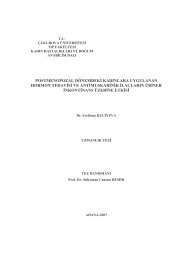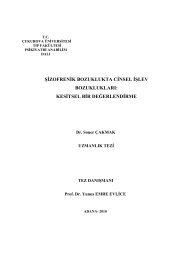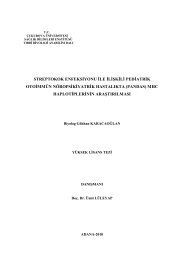ÇUKUROVA UNIVERSITY INSTITUTE OF NATURAL AND APPLIED ...
ÇUKUROVA UNIVERSITY INSTITUTE OF NATURAL AND APPLIED ...
ÇUKUROVA UNIVERSITY INSTITUTE OF NATURAL AND APPLIED ...
You also want an ePaper? Increase the reach of your titles
YUMPU automatically turns print PDFs into web optimized ePapers that Google loves.
3. FUNDAMENTALS <strong>OF</strong> DVR Mustafa İNCİ<br />
Figure 3.14. Vector diagram of in-phase compensation<br />
In most cases, a voltage sag leads to a phase jump, therefore the distortions<br />
due to phase changes are not minimized. As a consequence, a phase jump will be<br />
applied to at the load, leading to transients and circulating currents. Thus, if a<br />
sensitive load must be secured, the in-phase compensation cannot be used, be-cause<br />
it could lead to the tripping of sensitive loads. Note that, to realize this strategy, the<br />
PLL has to be synchronized to the grid voltage itself, and therefore, must not be<br />
locked to the pre-sag grid voltage during the compensation (Meyer et al., 2008).<br />
3.3.3.3. Phase advance compensation<br />
In this method the real power spent by DVR is minimized by decreasing the<br />
power angle between the sag voltage and the load current. In the two previous cases,<br />
namely pre -sag and in-phase compensation, active power is injected into the system<br />
by the DVR during disturbances. Moreover, the active power supplied is limited to<br />
the stored energy in the DC link and this part is one of the most expensive parts of<br />
the DVR. The minimization of injected energy is achieved by making the injection<br />
voltage phasor perpendicular to the load current phasor (Shazly et al., 2013).<br />
35
















